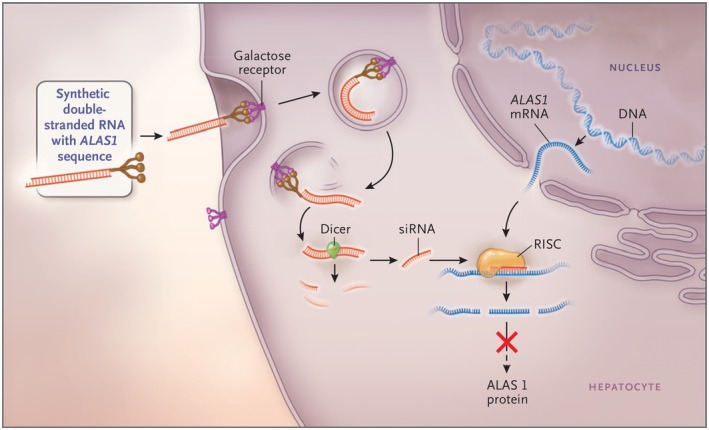Figure 3.

The mechanism of siRNA therapy. Synthetic double‐stranded RNA containing an ALAS‐specific sequence is derivatized with N‐acetylgalactosamine to target the asialoorosomucoid (galactose) receptor, which is expressed nearly exclusively on hepatocytes. Within the hepatocytes, the RNA is processed into approximately 20 base pair (bp) fragments by a cellular enzyme (dicer) and then separated into single strands. The strand that is complementary to ALAS‐1 (the guide strand) binds to cellular ALAS‐1 mRNA and enters the RNA‐induced silencing complex, where the new double‐stranded RNA is cleaved by a group of factors that include argonaute, a ribonuclease. The result is a reduction in the level of ALAS‐1 protein and decreased production of ALA. Abbreviations: RISC, RNA‐induced silencing complex. (From 5, used by permission of the authors and publisher.)
